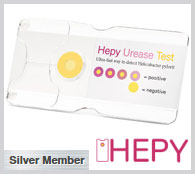Lichen-Derived Dye May Prevent Alzheimer’s by Neutralizing Toxic Peptides
By LabMedica International staff writers
Posted on 14 Dec 2011
A dye derived from lichens is among the candidate compounds being tested for their ability to convert toxic prefibrillar assemblies of amyloid-beta (A-beta) polypeptides – the cause of neuron death in Alzheimer’s disease – into mature, end-stage amyloid fibrils that are thought to be largely nontoxic.Posted on 14 Dec 2011
The dye under consideration by investigators at the Max Delbruck Center for Molecular Medicine (Berlin, Germany) is called O4. This compound is a blue dye that was isolated from lichens together with the reddish-brown dye orcein.
The investigators reported in the November 20, 2011, issue of the journal Nature Chemical Biology that O4 directly bound to hydrophobic amino acid residues in A-beta peptides and stabilized the self-assembly of beta-sheet-rich protofibrils and fibrils. The O4-mediated acceleration of amyloid fibril formation efficiently decreased the concentration of small, toxic A-beta oligomers in complex, heterogeneous aggregation reactions.
O4 treatment suppressed inhibition of long-term potentiation by A-beta oligomers in hippocampal brain slices, results that support the hypothesis that small, diffusible prefibrillar amyloid species rather than mature fibrillar aggregates are toxic for mammalian cells.
“This is a new mechanism,” said senior author Dr. Erich Wanker, professor of neuroproteomics at the Max Delbruck Center for Molecular Medicine. “Up to now it has been considered to be very difficult to stop the formation of small toxic protein assemblies. If our hypothesis is correct that the small aggregates, which are precursors of plaques, indeed cause neuronal death, with O4 we would have a new mechanism to attack the disease. We hope that our findings will stimulate research activities in this direction, especially in drug discovery.”
Related Links:
Max Delbruck Center for Molecular Medicine













